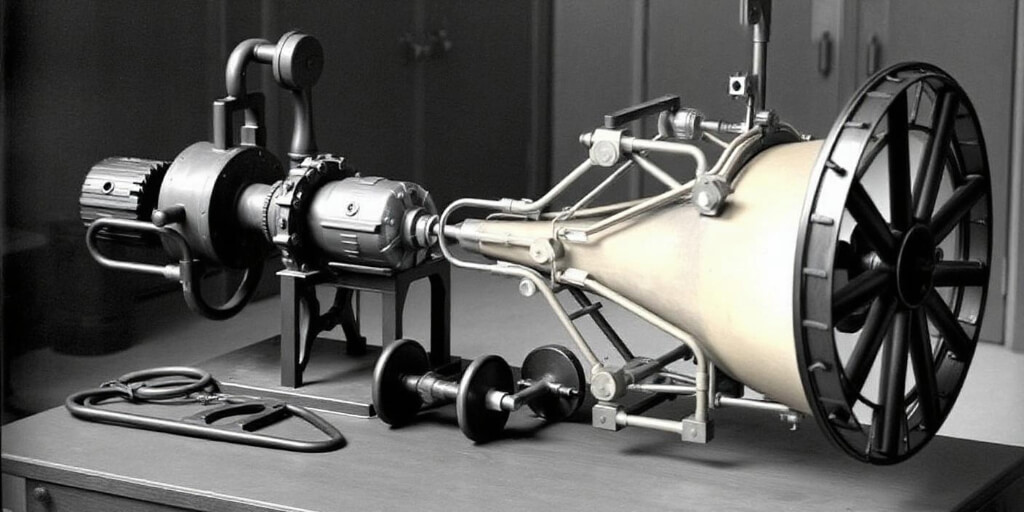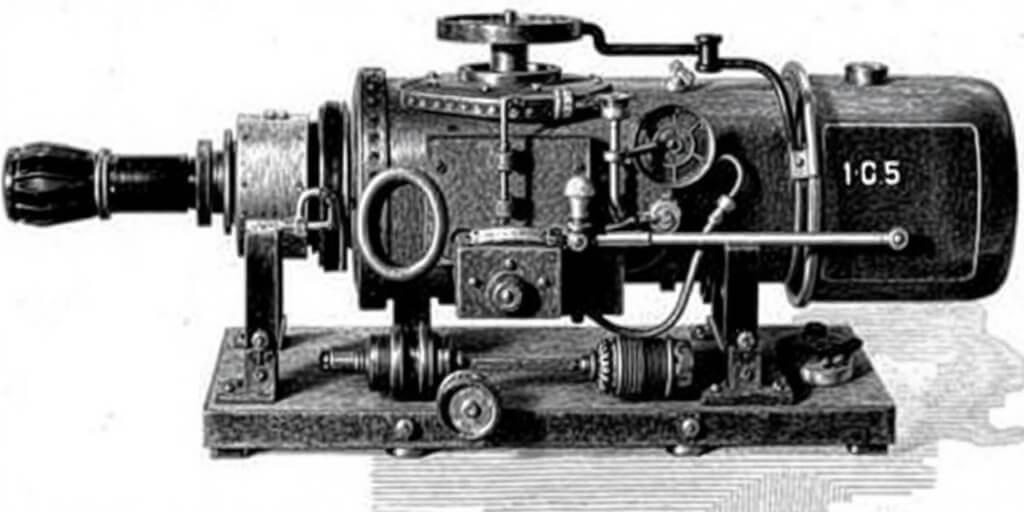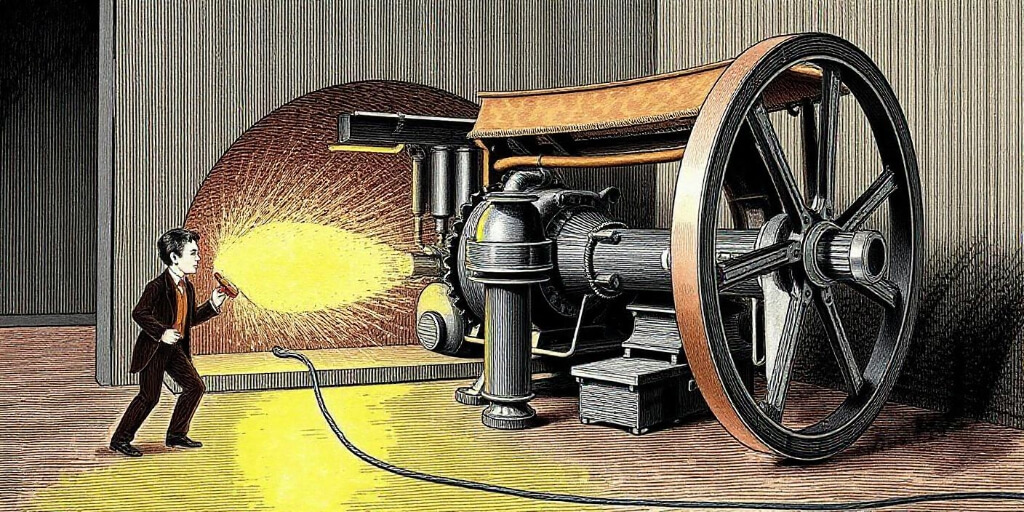The world we live in today is powered by electricity, a force so integral to modern life that it’s hard to imagine a time without it. Electric machines, from simple motors to complex generators, have transformed industries, homes, and daily routines. Yet, only some people consider the origins of these powerful tools. When was the first electric machine invented, and how did it set the stage for the technological advances we now take for granted?

Understanding the history of electric machines is crucial not only for appreciating the technological marvels of the present but also for recognizing the ingenuity and persistence of early inventors. This article delves into the fascinating journey of discovery, from the first experiments with electricity to the invention of the first electric machine, and examines its profound impact on society.
Early Concepts Of Electricity
Long before the invention of the first electric machine, the understanding of electricity was in its infancy. Ancient civilizations, such as the Greeks, observed phenomena that hinted at the existence of electrical forces, though they lacked the scientific knowledge to fully explain them. For instance, the Greek philosopher Thales of Miletus noted that rubbing amber could attract small objects—a phenomenon we now recognize as static electricity. These early observations, while rudimentary, marked the beginning of humanity’s curiosity about electricity. It wasn’t until much later, in the 16th and 17th centuries, that systematic scientific inquiry began to explore and document these mysterious forces, setting the stage for the discoveries that would eventually lead to the creation of the first electric machine.
As scientific exploration of electricity continued to evolve, the 18th and early 19th centuries were marked by a series of critical experiments that expanded our understanding of electrical phenomena. One of the pivotal figures of this era was Luigi Galvani, an Italian scientist whose work in the late 18th century with animal tissues led to the discovery of “animal electricity.” Galvani observed that frog legs twitched as if alive when struck by an electrical spark, suggesting that electricity could interact with biological systems. His findings, though initially misunderstood, paved the way for future research into electrical stimulation and bioelectricity. Building on Galvani’s discoveries, his nephew, Alessandro Volta, constructed the first true battery, known as the voltaic pile, which provided a steady and reliable source of electrical current. This development was crucial in demonstrating that electricity could be generated consistently rather than through static charges alone. These advancements, alongside the growing body of knowledge from experiments in electrostatics and electromagnetism, marked a significant shift from merely observing electrical effects to actively harnessing and manipulating electrical energy. This period of discovery laid the groundwork for the practical applications of electricity, ultimately leading to the creation of electric machines and the widespread use of electrical power in modern society.

The First Electric Machine: A Historical Overview
The journey toward creating the first electric machine is a fascinating story of experimentation and discovery. Before the concept of an electric machine took shape, inventors and scientists focused on understanding electricity itself. Early efforts involved basic experiments with static electricity and simple devices like the Leyden jar, which could store electrical charge. However, these devices were more about demonstrating the principles of electricity than providing practical applications. It wasn’t until the 19th century that the idea of harnessing electricity for useful work began to materialize. Key developments, such as the discovery of electromagnetic induction by Michael Faraday in 1831, provided the necessary understanding to transition from theory to practice. This pivotal discovery led to the invention of the dynamo in 1832, widely recognized as the first electric machine. Faraday’s dynamo, capable of converting mechanical energy into electrical energy, represented a breakthrough, marking the dawn of the electrical age and setting the foundation for the widespread use of electric machines in industry and daily life.
Key Inventions Leading To The First Electric Machine
The invention of the first electric machine was not an isolated event but rather the culmination of several key discoveries and innovations that laid the groundwork for its creation. One of the most critical advancements was the discovery of electromagnetism by Hans Christian Ørsted in 1820, which revealed the intrinsic connection between electricity and magnetism. This breakthrough was quickly followed by André-Marie Ampère’s work on electrodynamics, further expanding the understanding of how electric currents could interact with magnetic fields. Building on these concepts, Michael Faraday’s discovery of electromagnetic induction in 1831 was a game-changer, as it demonstrated that a changing magnetic field could induce an electric current in a conductor. This principle became the foundation for the design of the dynamo, the first electric machine capable of generating continuous electrical power. Alongside these scientific milestones, early practical devices like the telegraph and rudimentary electric motors also played crucial roles, showcasing the potential of electricity for communication and mechanical work. Together, these inventions set the stage for the development of the first electric machine, marking the transition from theoretical science to practical engineering.
The path to the invention of the first electric machine was paved by a series of pivotal innovations that collectively advanced the understanding and application of electricity. One of the crucial inventions was the development of the electric battery by Alessandro Volta in 1800. Volta’s battery, known as the voltaic pile, provided a continuous and reliable source of electrical current, which was essential for experimental work and practical applications. This innovation allowed scientists to study electric phenomena under controlled conditions and demonstrated that electricity could be generated chemically rather than solely through friction or static charges. Another significant milestone was the creation of the electromagnet by William Sturgeon in 1825, which greatly enhanced the ability to produce and control magnetic fields. Sturgeon’s electromagnet was crucial for understanding how electricity could interact with magnets, laying the groundwork for the development of electric motors and generators. Additionally, the work of Hans Christian Ørsted and André-Marie Ampère, who explored the relationship between electricity and magnetism, provided the theoretical foundation for electromagnetic induction. This principle, later utilized by Michael Faraday in his dynamo, was key to transforming mechanical energy into electrical energy. These inventions and discoveries, each building on the knowledge of their predecessors, collectively contributed to the realization of the first electric machine and marked a significant leap in technological progress.

The First Recognized Electric Machine
The first recognized electric machine, often attributed to Michael Faraday’s invention of the dynamo in 1832, marked a pivotal moment in the history of technology. Faraday’s dynamo was revolutionary because it was the first machine capable of converting mechanical energy into electrical energy on a continuous and practical scale. Using the principle of electromagnetic induction, which Faraday had discovered just a year earlier, the dynamo operated by rotating a coil of wire within a magnetic field, thereby generating an electric current. This innovation was groundbreaking, as it provided a reliable method for producing electricity, which could then be used to power machinery, lighting, and eventually, entire cities. While other early devices, like electrostatic generators, had generated electricity in limited forms, the dynamo was the first machine to do so in a way that was both efficient and scalable. Faraday’s dynamo not only laid the foundation for the modern electrical power industry but also solidified his place as a key figure in the development of electric machines.
The Evolution Of Electric Machines
The evolution of electric machines from the early days of Faraday’s dynamo to the sophisticated devices we rely on today is a testament to human ingenuity and relentless innovation. After the invention of the first electric machine, engineers and inventors around the world began to refine and improve the technology. The dynamo evolved into a more powerful and efficient generator, capable of producing large-scale electricity for industrial use. Parallel advancements in electric motors transformed mechanical energy into electrical energy, leading to the proliferation of electric machinery in factories, homes, and transportation. The 20th century saw the introduction of alternating current (AC) systems, popularized by Nikola Tesla, which allowed for the efficient transmission of electricity over long distances, further expanding the reach of electric power. Over time, electric machines became more compact, reliable, and versatile, finding applications in everything from household appliances to complex industrial processes. Today, the evolution continues with the development of smart electric machines that integrate digital technology, enhancing efficiency and enabling new capabilities. This ongoing progress reflects the profound impact that the first electric machine has had on society, driving technological advances that continue to shape the modern world.

The Impact Of Electric Machines On Society
Electric machines have had a transformative impact on society, fundamentally altering the way we live, work, and interact with the world. From the moment the first electric machine was invented, it unleashed a wave of technological progress that fueled the Industrial Revolution, powering factories and enabling mass production on an unprecedented scale. This shift not only revolutionized industry but also catalyzed urbanization, as electricity made it possible to light cities, power public transportation, and support growing populations. In homes, electric machines have drastically improved the quality of life, from the convenience of household appliances to the entertainment provided by electronic devices. The influence of electric machines extends to every corner of modern life, driving advancements in healthcare, communication, and education. As society continues to evolve, electric machines remain at the forefront of innovation, shaping the future of renewable energy, smart technology, and sustainable development. The legacy of the first electric machine is evident in the countless ways that electricity now powers our daily lives, making it one of the most significant developments in human history.
Key Figures In The History Of Electric Machines
The development of electric machines is a story of brilliant minds whose discoveries and innovations have left an indelible mark on history. Michael Faraday stands as one of the most pivotal figures, with his discovery of electromagnetic induction in 1831 laying the foundation for the first electric machine, the dynamo. Faraday’s work transformed theoretical science into practical technology, making electricity accessible and useful on a large scale. Another key figure is Nikola Tesla, whose pioneering work with alternating current (AC) revolutionized the way electricity is transmitted and utilized. Tesla’s invention of the AC motor and his contributions to the development of the AC power system were instrumental in making electricity a viable source of power for cities and industries. Thomas Edison, though known primarily for his development of the electric light bulb, also played a crucial role in the commercialization of electric power, establishing the first power plants and contributing to the creation of the modern electrical grid. These and other inventors, such as James Clerk Maxwell and André-Marie Ampère, collectively advanced the understanding and application of electricity, turning the early experiments of the 18th century into the powerful electric machines that drive our world today. Their legacy is not just in the machines they created but in the foundation they built for future generations of engineers and inventors.
In addition to Faraday, Tesla, and Edison, other influential figures played crucial roles in the development and evolution of electric machines. James Clerk Maxwell, a Scottish physicist, made significant contributions with his formulation of Maxwell’s equations in the mid-19th century. These equations provided a comprehensive theory of electromagnetism, unifying the understanding of electric and magnetic fields and predicting the existence of electromagnetic waves. Maxwell’s work was instrumental in advancing electrical engineering and laid the theoretical groundwork for many future innovations in electric machines. Furthermore, Michael Faraday’s contemporary, Joseph Henry, made important advancements in electromagnetism and electrical engineering. Henry’s experiments with self-induction and mutual induction contributed to the understanding of electromagnetic fields and the development of practical electrical devices. His work on the principles of inductance was crucial for the later development of transformers and inductors used in electric machines. Together with Faraday, Tesla, and Edison, these key figures not only advanced the scientific understanding of electricity but also facilitated the practical applications that led to the creation and refinement of electric machines, shaping the technological landscape of the modern world.

Common Misconceptions About The First Electric Machine
Despite the well-documented history of the first electric machine, several misconceptions persist about its development. One common myth is that the dynamo was the first device to produce electricity, overlooking earlier inventions like the Leyden jar and electrostatic generators. Another misconception is that Faraday’s dynamo was an immediate success; in reality, it took time for the practical applications of his invention to be fully realized and adopted. Additionally, there is sometimes confusion about the contributions of various inventors, with some attributing the creation of the first electric machine to figures like Nikola Tesla or Thomas Edison, who made significant contributions but were not the first to develop a practical electric machine. Understanding these misconceptions helps clarify the true origins and impact of the first electric machine and highlights the collaborative nature of technological advancement.
Final Thoughts
In summary, the invention of the first electric machine was a landmark achievement that marked the beginning of the electrical age. From the early experiments with static electricity to the development of the dynamo, each step in this journey reflects a deepening understanding of electricity and its potential. The evolution of electric machines has profoundly influenced industry, daily life, and technological innovation, shaping the modern world in ways that are both visible and subtle. As we look to the future, the legacy of the first electric machine continues to drive advancements in energy, technology, and sustainability. By appreciating the history and impact of this groundbreaking invention, we gain a greater appreciation for the power of human creativity and the ongoing quest for progress.
FAQs
What Was The First Electric Machine Ever Invented?
The first electric machine is widely recognized as Michael Faraday’s dynamo, invented in 1832. This device was capable of converting mechanical energy into electrical energy through the principle of electromagnetic induction.
Who Were The Key Inventors Involved In The Development Of The First Electric Machine?
Key figures include Michael Faraday, who invented the dynamo; Hans Christian Ørsted, whose discovery of electromagnetism laid the crucial groundwork; and Nikola Tesla, whose advancements in alternating current systems further developed the practical applications of electricity.
How Did The Invention Of The First Electric Machine Impact The Industry?
The invention of the dynamo and other early electric machines revolutionized the industry by providing a reliable and scalable source of electrical power. This innovation facilitated mass production, enhanced manufacturing processes, and contributed to the rapid industrialization of cities.
What Were Some Earlier Devices Related To Electricity Before The First Electric Machine?
Before the dynamo, devices such as the Leyden jar, used for storing electrical charge, and electrostatic generators, which produced high-voltage electricity through friction, were important for understanding and demonstrating electrical principles.
How Have Electric Machines Evolved Since The Invention Of The Dynamo?
Electric machines have evolved significantly, with advancements including more efficient and powerful generators, the development of electric motors, and the integration of digital technology in modern smart machines. These innovations have expanded the applications and capabilities of electric machines across various industries and everyday life.
Also Read: Who Invented Toilet Paper?
